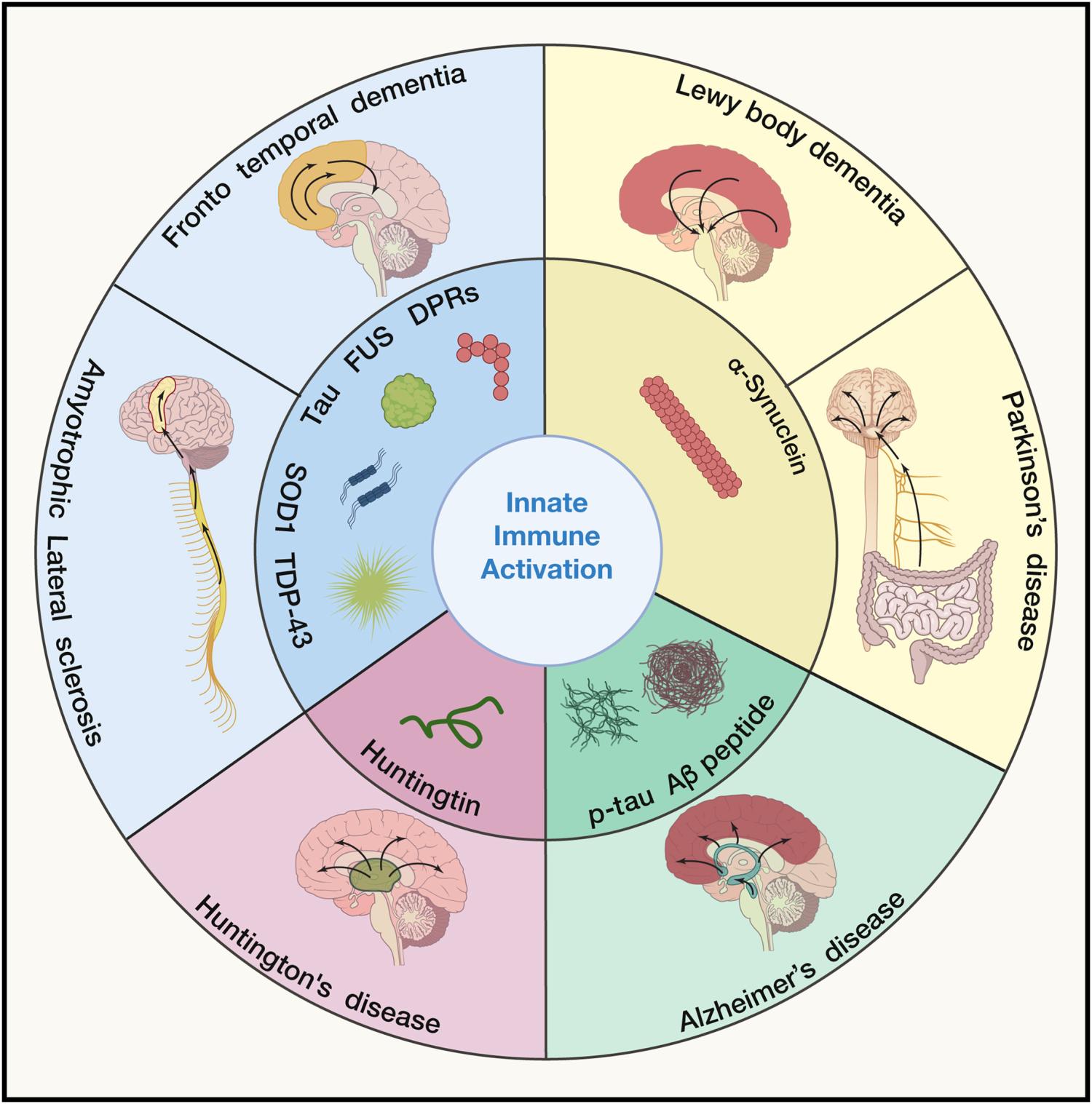
Activation of the innate immune system following pattern recognition receptor binding has emerged as one of the major pathogenic mechanisms in neurodegenerative disease. Experimental, epidemiological, pathological, and genetic evidence underscores the meaning of innate immune activation during the prodromal as well as clinical phases of several neurodegenerative disorders including Alzheimer's disease, Parkinson's disease, amyotrophic lateral sclerosis, and frontotemporal dementia. Importantly, innate immune activation and the subsequent release of inflammatory mediators contribute mechanistically to other hallmarks of neurodegenerative diseases such as aberrant proteostatis, pathological protein aggregation, cytoskeleton abnormalities, altered energy homeostasis, RNA and DNA defects, and synaptic and network disbalance and ultimately to the induction of neuronal cell death. In this review, we discuss common mechanisms of innate immune activation in neurodegeneration, with particular emphasis on the pattern recognition receptors (PRRs) and other receptors involved in the detection of damage-associated molecular patterns (DAMPs).
